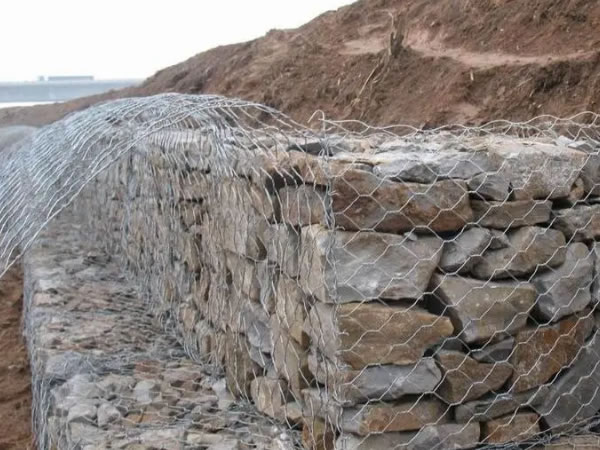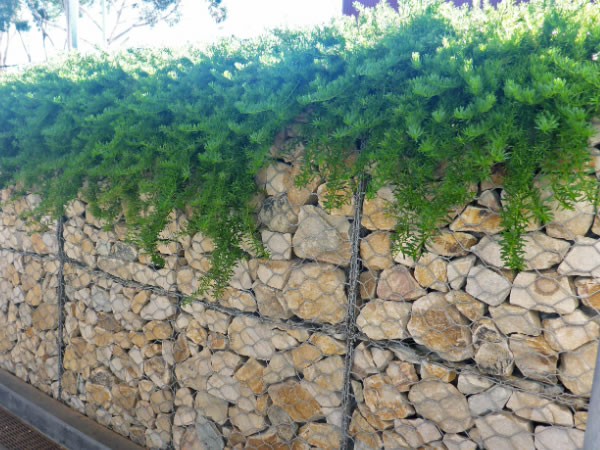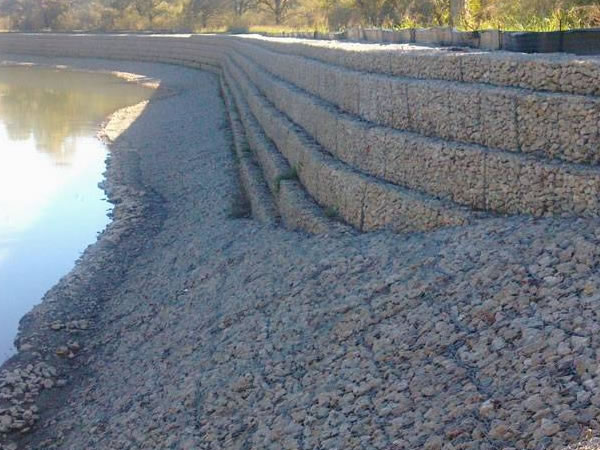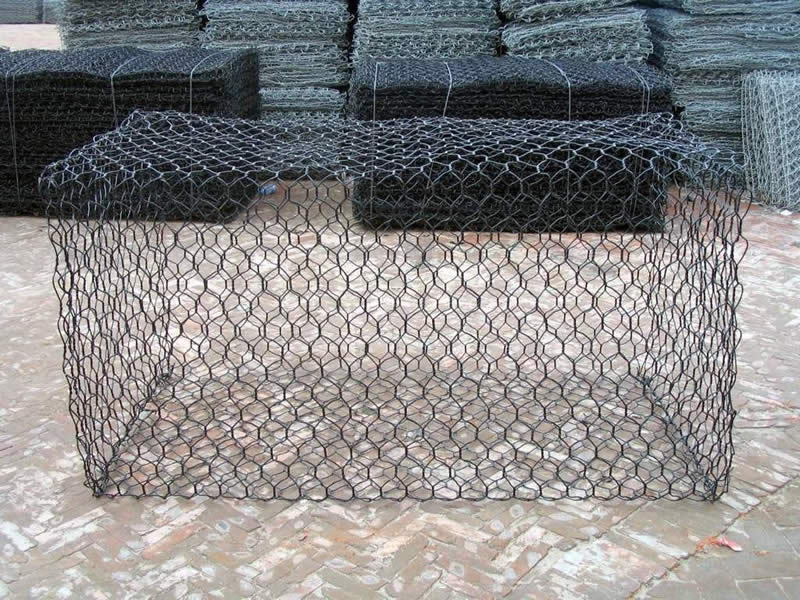Specifications
- Mesh Size: The size of the hexagonal openings can vary, typically ranging from 60x80mm to 100x120mm, to accommodate different types of fill and application needs.
- Wire Diameter: Ranges from 2.0mm to 4.0mm, with or without PVC coating. The selection depends on the desired strength and durability.
- Gabion Size: Customizable to project requirements, with common dimensions for gabion boxes being 1x1x1m, 2x1x1m, 3x1x1m, etc., and for mattresses, commonly 3x2x0.3m, 4x2x0.3m, etc.
- Tolerance: Manufactured within standard tolerances for dimensions and strength, as specified in relevant industry standards.
| Mesh | Wire dia | Mesh Width | |
| BWG | mm | Meter | |
| 3/8″ | 27-23 | 0.41-0.64 | width limit:2M,single or double edge |
| 1/2″ | 27-22 | 0.41-0.71 | width limit:2M,single or double edge |
| 5/8″ | 27-22 | 0.41-0.71 | width limit:1.22M,single or double edge |
| 3/4″ | 26-20 | 0.46-0.89 | width limit:2M,single or double or strong edge |
| 1″ | 25-19 | 0.51-1.07 | width limit:2M,straight or reversed twist |
| 1-1/4″ | 24-18 | 0.56-1.24 | width limit:2M,straight or reversed twist |
| 1-1/2″ | 23-16 | 0.64-1.65 | width limit:2M |
| 2″ | 22-14 | 0.71-2.11 | width limit:2M |
| 3″ | 21-15 | 0.81-2.11 | width limit:2M |
Processing Types
- Straight Twist Hexagonal Wire Netting: This type features wire that is twisted in a straight direction to form hexagonal openings.
- Reverse Twist Hexagonal Wire Netting: In this variant, the wire is twisted in the opposite direction after every few twists, enhancing the netting’s strength and stability.
- Double-Direction Twisted Hexagonal Wire Netting: This type involves twisting the wire in two directions, creating a highly durable and robust netting.
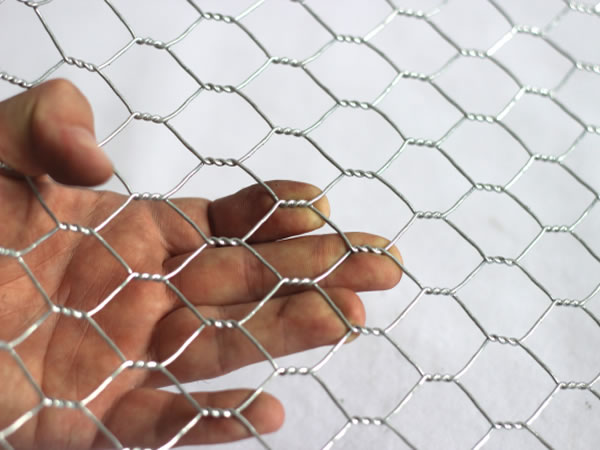
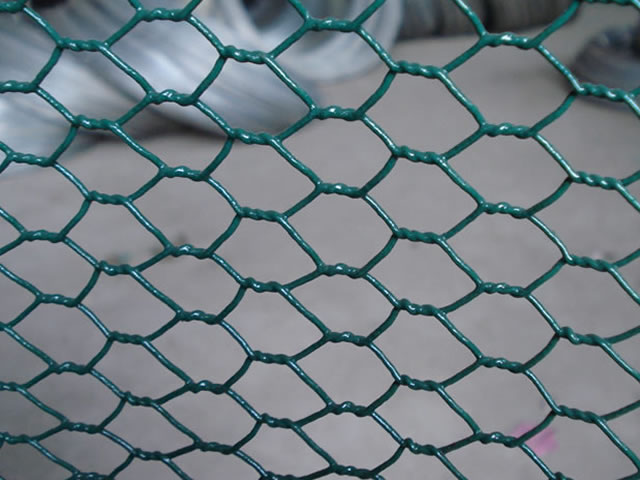
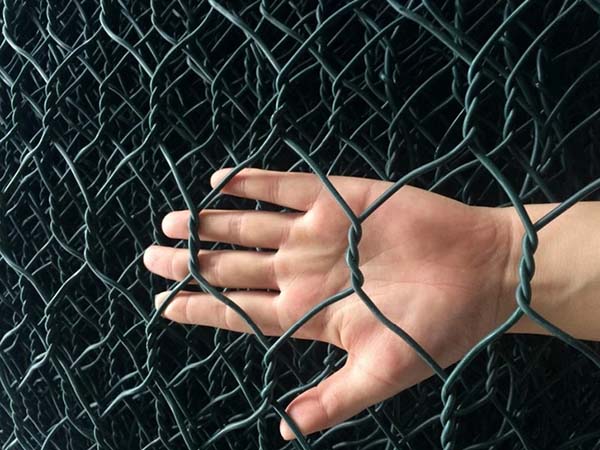
Finishes
- Galvanized After Weaving (GAW): The netting is woven from steel wire and then galvanized, providing strong protection against corrosion.
- Galvanized Before Weaving (GBW): Here, the wire is galvanized before it’s woven into netting.
- PVC Coated Galvanized: This finish involves coating galvanized wire with PVC, offering double protection against corrosion and weathering.
- Hot-Dipped Galvanized: After the netting is woven, it’s dipped in molten zinc, creating a thick, protective galvanized coating.
- Electro Galvanized: This involves applying a thin layer of zinc to the wire through electroplating before weaving.
Characteristics
- Mesh Type: The hexagonal mesh pattern enhances both flexibility and strength, enabling the gabions to accommodate uneven settling and pressure from water or soil effectively.
- Material: Primarily made from galvanized or PVC-coated steel wire, these gabions resist environmental damage and boast a prolonged lifespan.
- Size and Configuration: Available in various dimensions, hexagonal mesh gabions can be stacked to form structures like retaining walls. They are delivered flat-packed for on-site assembly and filling.
- Filling: Typically filled with stones or rocks, chosen to prevent passage through the mesh while ensuring tight packing to minimize voids.
Advantages
- Durability and Strength: The combination of wire mesh and stone fill results in a robust structure capable of enduring severe conditions.
- Flexibility: Their ability to adjust to ground movements minimizes the risk of structural damage.
- Permeability: Stone gaps allow water flow, reducing hydrostatic pressure and mitigating water damage risks.
- Environmentally Friendly: Gabions promote the use of local fill materials and support vegetation, enhancing their integration into natural settings and providing wildlife habitats.
- Cost-Effectiveness: Generally more affordable than alternatives like concrete or steel walls, especially where fill materials are easily accessible.
Applications
- Retaining Walls: Employed for slope stabilization, erosion control.
- River and Stream Banks: Utilized to prevent erosion, stabilize banks, and support aquatic habitats.
- Coastal Defence: Effective in absorbing wave energy and safeguarding shorelines against erosion.
- Architectural and Landscaping Features: Creatively used for aesthetically appealing structures that harmonize with the environment.
